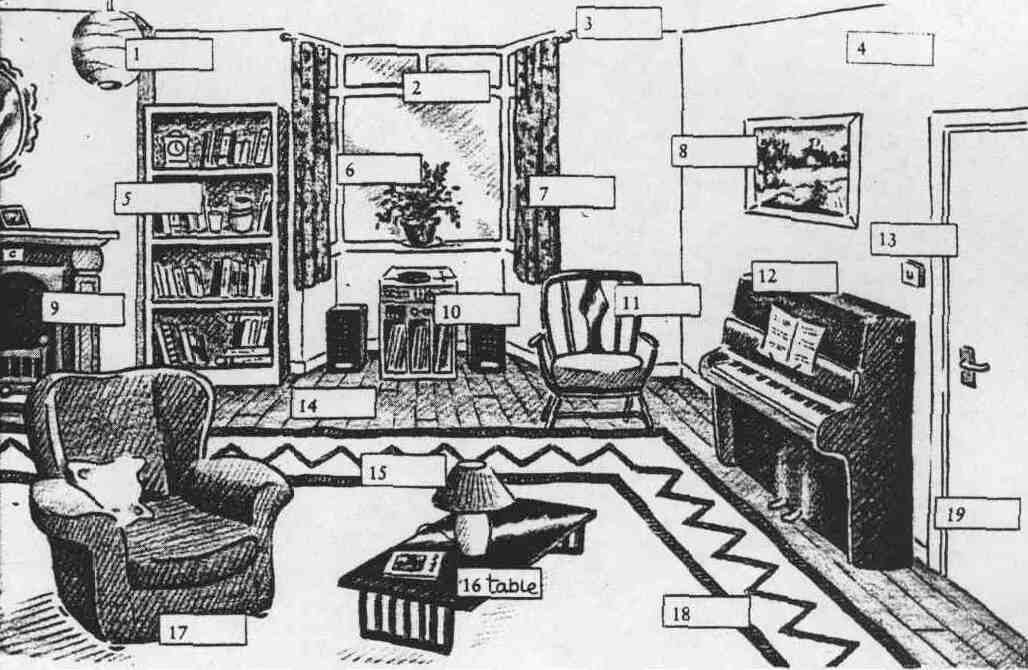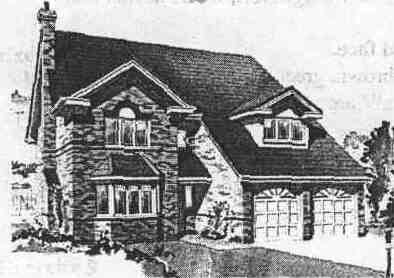
- •Міністерство освіти і науки України Івано-Франківський національний технічний університет нафти і газу Кафедра англійської мови
- •1 Topical vocabulary. Learn the words
- •2 Read the text and translate it. Describe your friend’s appearance.
- •3 Answer the questions about your friend:
- •4 Read and complete the text with the words and expressions from the box.
- •5 Fill in the table about Penny.
- •6 Write a description of yourself or of somebody you like. Use some words and expressions from Exercise 2 and 4.
- •7 Fill in the blanks about your family.
- •8 Answer the questions:
- •9 Read the text. Ask your group-mate all types of questions. Man and his appearance
- •10 Look at these four people. Describe their appearance and character.
- •11 Read the text and check your understanding. On "Do's and Don'ts" in Greetings and in Addressing People
- •12 Fill in the gaps in the conversations. Use the words in the box. Read the dialogues in pairs. Make up the same dialogues.
- •13 Read the questions. Match the questions and the answers.
- •Unit 2 home and house
- •2 Read the text and translate it.
- •3 Answer the following questions:
- •4 Look at the picture.
- •5 Read and translate the following text. Divide it into logical sections, suggesting a sub-heading for each. An english house
- •11 Translate the proverbs into Ukrainian.
- •12 Read the poem. Write down and count all the objects at home.
- •The bedroom won't even took at me
- •Unit 3 meals
- •1 Topical vocabulary. Learn the words
- •1 Read the text.
- •3 Check your understanding. Answer the following questions:
- •4 Read and dramatize the dialogue.
- •5 Read the dialogue.
- •6 Complete the sentences according to the dialogue:
- •7 Ask and answer. Choose the correct answer from the right-hand column.
- •8 Read the text.Compare English and Ukrainian food. An Englishman's View of Ukrainian Food.
- •9 Try to combine each adjective from the left-hand column with as great a number of nouns from the right-hand column as possible
- •10 Read: "Table Manners. A List of Do's and Don'ts." Think of manners you stick to.
- •11 Find one odd word in each of the lines below and write it out.
- •Unit 4 travelling. Hotel. Custom-house
- •1 Learn the topical vocabulary:
- •2 Read the text. Travelling
- •3 Write down any means of transport you remember.
- •4 Hotel. Arrange the hotel facilities in the following list in order of importance.
- •5 Hotel. Making a reservation. Sending a fax.
- •6 Answer the questions
- •7 Read the dialogue. At the custom-house
- •8 Finish the dialogues:
- •9 Read the text and write, what you have to do and what you are prohibited to do while crossing the border (in two columns). At the custom-house
- •10 Read this with a dictionary. Can you write some misleading advice for foreign visitors to your country? Misleading advice for foreigners
- •11 Imagine an English friend is coming to visit you in your home.
- •12 These two conversations are mixed up.
- •Unit 5 At the doctor’s
- •2 Read the text. Some facts concerning the system of health service.
- •3 Answer the questions
- •4 Read the sentences and put them in the right order. Answer, what happened to the author? feeling ill
- •5 Divide the following 15 words into three equal groups under the headings:
- •7 Reading and speaking.
- •8 In the box are words to do with medicine. They can be divided into four groups. Decide what the four groups are, then complete the network.
- •9 A) Read the interview of Chris Eubank, the boxer.
- •10 A) You've got all or some of the following symptoms. What's the matter with you?
- •12 A) Work with a partner. Take turns to be the doctor and the patient.
- •13 Write about a time when you went to see the doctor or went to hospital.
- •14 Here is a story called The Medical Book. Put the pictures in the right order, and then write the story of what happened. Use some of the words in the box.
- •References
3 Answer the following questions:
1 Where do you live?
2 Is there a lift in your block of flats?
3 Which floor is your flat on?
4 What modern conveniences are there in your flat (house)?
5 How many rooms are there in your flat?
6 Which room is the largest one? Describe it.
7 What furniture is there in your living room?
8 How many stories are there in your house?
9 Is there a yard or a park near your house?
10 Do you have a room for yourself?
11 How is your kitchen furnished?
12 Do you like your flat (house)?
13 Describe your flat (house).
4 Look at the picture.
a) Match words from the box with the items in the picture. Use your dictionary to help you.
|
Armchair bookcase carpet ceiling chair curtain door fireplace floor lamp light piano picture plant stereo switch table wall window |
|
|
b) Where are these things? Write about the place of each object. Use the prepositions in the box.
|
next to in against on top of above under on |
Example: the vase of flowers. The vase of flowers is on the window sill.
5 Read and translate the following text. Divide it into logical sections, suggesting a sub-heading for each. An english house
|
|
In winter houses in Britain used to be rather cold, since many did not have double glazing and tended to be draughty. The fire did not warm the whole room. The bedrooms were often not heated at all. But, gradually, more people are putting in central heating and are using more electric fires. In order to save energy they sometimes have secondary glazing installed, which makes the rooms draught-proof.
Only one family in a hundred has live-in help, and often this help is a girl who comes from abroad for six months to a year to learn English (an au pair).
Most people are responsible for the upkeep of their homes themselves. Do-it-yourself (DIY) is for some people a hobby, for others a necessity. The chief reason for this is the high cost of labour for services such as decorating and household repairs.
Double glazing- подвійні вікна; to be draughty- мати протяг; to be responsible for the upkeep - бути відповідальним за утримання (житла) у доброму стані; household repairs- ремонт житла
6 Re-arrange the jumbled sentences to form a coherent text:
-
Many English houses do not have double glazing.
-
A few women have a live-in help, an au pair girl, who comes from abroad for six months to a year to learn English.
-
The front door of a typical English house opens into a hallway.
-
There is a back door which opens onto the garden or the passage running along the side of the house.
-
An English house usually has two floors and no cellar.
-
More and more people are putting central heating in to replace electric and gas fires.
-
There is a small garden at the front and a larger one at the back of the house where most people like to spend their spare time.
-
The bedrooms are usually upstairs.
-
Downstairs there are usually two medium-sized living rooms and a kitchen.
-
Many people do repairs on the house themselves.
-
Most British houses have three bedrooms, but sometimes four, five or (occasionally) even more.
7 Write a summary of the text in approximately 200 words.
8 Make two lists of the things in the box:
1. Things for the bathroom. 2. Things for the kitchen.
Some things may go in both lists. Add any other word you know.
|
washing machine shower dishwasher soap freezer fridge sink toaster taps bath cupboards cooker towel rail toilet microwave teapot kettle table washbasin |
9 Work with a partner.
a) student a: Think of a room that you like and describe it to your partner. What are your special possessions? Where are they in the room?
student B: Try to draw what your partner is describing.
b) Then exchange the roles.
10 Work with a partner. Imagine you are an estate agent and a client.
a) The estate agent should interview the client. Use the words in brackets to help you. Make notes.
1. What kind of home does the client want? (modern, small, in the country?)
2. Ask about the type and number of rooms upstairs and downstairs (large kitchen / important).
3. What would the client like to have outside? (want / a garage?)
b) The estate agent and the client should each write a short advertisement for the home.
Example: WANTED: Flat near the sea, with 3 bedrooms etc.


